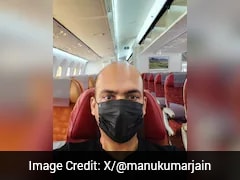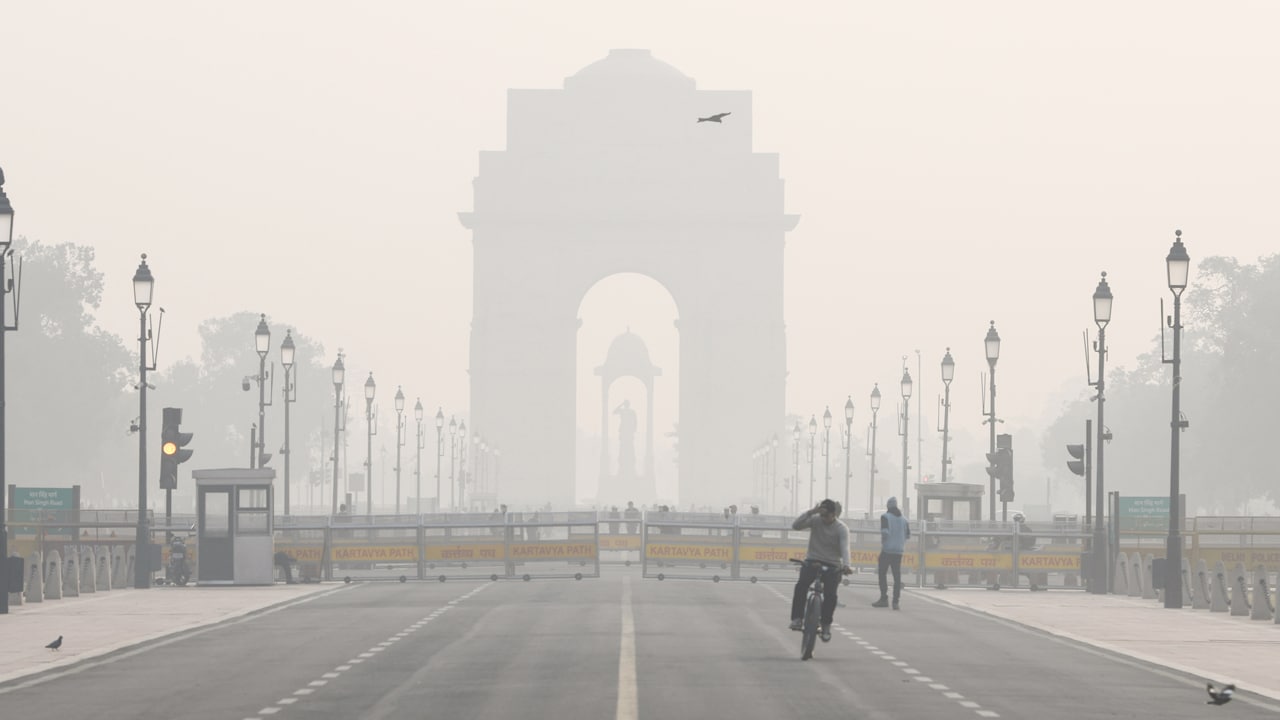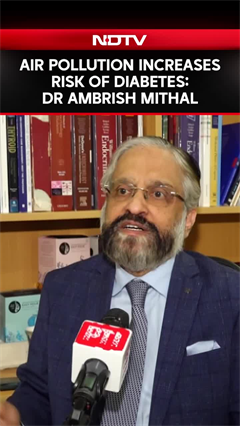- Home/
- Is Poor Air Quality Triggering Early Vision Problems In Urban Children? Doctors Explain
Is Poor Air Quality Triggering Early Vision Problems In Urban Children? Doctors Explain

For years, parents have blamed screens for worsening eyesight in their children. But doctors now warn of another, less obvious culprit: Toxic urban air. Across Delhi NCR, Hyderabad, Bengaluru and other polluted metros, ophthalmologists report a troubling pattern of children developing myopia (near-sightedness) earlier than ever before, with faster progression. As India battles some of the worst air pollution levels globally, researchers are uncovering how harmful particulate matter, reduced daylight exposure and eye irritation may be reshaping the eye health landscape for urban kids.
Myopia has already reached epidemic proportions in East Asia, and global health bodies warn India may be heading in the same direction. The World Health Organization (WHO) estimates that half the world may be myopic by 2050 if trends continue, with environmental factors playing a major role. Studies also show that reduced outdoor time and exposure to bright natural light, both heavily influenced by air pollution, significantly increase the risk of early-onset myopia in children.
Now, Indian doctors are seeing these effects unfold in real time. Using insights from two leading ophthalmologists, we explain how poor air quality affects children's eyes, what early warning signs parents should watch for, and what families can realistically do to protect young vision in polluted cities.
How Air Pollution Disrupts Healthy Eye Development
Healthy eye growth in childhood depends on regular exposure to bright outdoor light, which helps regulate dopamine release in the retina, a mechanism that prevents the eyeball from elongating excessively, the hallmark of myopia. Research shows that children who spend more time outdoors have significantly lower risk of developing myopia.
But in polluted Indian cities, this natural protective factor is quickly disappearing.
Reduced daylight exposure
Air pollution scatters and blocks sunlight, reducing the intensity of natural outdoor light that reaches young eyes. According to Dr. Pankaj Ranjan, Sr Eye Surgeon & Chief Medical Officer, Myopia Clinic, Safdarjung Hospital: "Healthy eye development depends on adequate exposure to bright daylight. But as pollution rises, the sunlight children do get is filtered through thick smog, cutting down on the benefits of natural daylight."
He adds that children are also spending less time outdoors because air quality is unsafe, further reducing exposure to this critical developmental input.
Irritation, dryness and inflammation
Polluted air contains PM2.5, nitrogen dioxide and ozone, particles known to irritate the eyes. The American Academy of Ophthalmology (AAO) warns that air pollution can worsen dry eye disease, allergic conjunctivitis and surface inflammation.
Dr. Ranjan explains: "Pollution doesn't just reduce natural light; it also irritates the eyes. Kids experience dryness, itchiness, and rub their eyes more often, which may push the eyes toward abnormal growth patterns associated with myopia."
How Behaviour Changes Under Pollution And Worsens Myopia Risk
Because polluted air limits outdoor activity, the behavioural shift worsens the biological impact. Dr. Krishna Priya, Deputy Medical Superintendent, Sadhuram Eye Hospital, Hyderabad, notes: "Pollution sets off a chain reaction of environmental and behavioral factors detrimental to visual health. High pollution levels limit safe outdoor playtime for children, cutting down their exposure to bright natural light."
This leads to more indoor time, more screens, and more near work, all major contributors to early myopia. She adds: "Polluted air causes ongoing eye irritation, burning, redness and dryness, which leads children to blink less and spend more time indoors, often staring at screens. This combination creates a perfect storm for myopia to develop earlier and progress faster."
Scientific evidence supports these observations. A global review published in The Lancet Global Health confirms that reduced outdoor exposure and increased near work are among the strongest predictors of childhood myopia.
The Alarming Trends Doctors Are Seeing In Clinics
Dr. Ranjan reports: "We're now seeing kids as young as five or six with early signs of nearsightedness." Dr. Krishna Priya adds: "Some children's vision deteriorates rapidly within just one year, especially in ages 6 to 12."
This aligns with WHO warnings that urban pollution, reduced daylight and screen-heavy lifestyles could cause myopia to become one of the leading causes of vision impairment worldwide by 2050.
How Parents Can Protect Their Child's Eyes in Polluted Cities
- Prioritise outdoor time on clean-air days: Even 60-90 minutes of outdoor play daily can significantly slow myopia progression. Choose times when AQI is lower.
- Improve indoor lighting: Both doctors stress that well-lit indoor spaces reduce eye strain.
- Maintain the 20-20-20 rule: Every 20 minutes of near work, take a 20-second break, look 20 feet away.
- Watch for early symptoms: Blurred distance vision, squinting, rubbing eyes, headaches and sitting too close to screens.
- Schedule regular eye exams: WHO recommends annual vision screening for all children; doctors in polluted cities suggest even 6-monthly check-upsfor high-risk kids.
- Advocate for cleaner air: Dr. Krishna Priya stresses that "parents should support public policies that promote cleaner air and safe outdoor spaces where kids can play."
Air pollution is no longer just a respiratory threat, it's reshaping how children's eyes grow. By reducing daylight exposure, causing chronic eye irritation, and driving kids toward indoor, screen-heavy lifestyles, polluted urban environments are accelerating early-onset myopia. Doctors warn that unless air quality improves and outdoor time increases, India could see a surge in childhood vision problems in the coming decade. Parents can't control pollution levels alone, but with smarter habits, proactive eye care and better indoor environments, they can still protect their child's vision in a challenging urban landscape.
Disclaimer: This content including advice provides generic information only. It is in no way a substitute for a qualified medical opinion. Always consult a specialist or your own doctor for more information. NDTV does not claim responsibility for this information.
also read
Expert Weighs In On Toxic Air's Hidden Toll On Pregnant Women And Unborn Babies
Edited by Srishti Singh SisodiaStricter Anti-Pollution Rules For Delhi Amid Dip In Air Quality
Reported by Himanshu Shekhar Mishra, Edited by Chandrajit MitraDelhi Air Quality Remains "Very Poor", Fog Forecast For Today
Press Trust of India
Latest Stories
- Edited by Srishti Singh Sisodia | Sunday November 23, 2025
Air pollution poses significant risks to pregnant women and their unborn babies.
- Reported by Himanshu Shekhar Mishra, Edited by Chandrajit Mitra | Saturday November 22, 2025
Stricter pollution curbs are expected to kick in soon to tackle the worsening air quality in Delhi and nearby regions with the onset of winter.
- Press Trust of India | Saturday November 22, 2025 , New Delhi
There was no respite from toxic air for Delhi as it continued to face "very poor" air quality on Saturday, according to the Central Pollution Control Board (CPCB).
- Dr. Manish Garg | Saturday November 22, 2025
When temperatures drop, the air becomes dry and constricts the airways, making it harder for COPD patients to breathe. This can lead to coughing, wheezing, and sudden breathlessness even with minimal physical activity.
- Edited by Abhinav Singh | Saturday November 22, 2025
Jain said the city's current situation hit him harder, as he grew up in Meerut, studied at IIT Delhi, and fell in love with the place, its energy, food, and people.
................................ Advertisement ................................
Latest Videos
Opinion
Blog | Well Done, Delhi. You've Turned Lung Sacrifice Into A Badge Of HonourSaikat Kumar Bose
Monday November 10, 2025Till some years back, Delhiites would ask angry questions to those in power about the capitals annual tryst with toxic air. This has changed. Those in the driving seat dont see the need to answer now.
Opinion | Why Indians Have Just Given Up On Air Pollution CrisisTanushree Ganguly
Friday December 20, 2024While some may argue that people in Delhi are now more aware of air pollution than they were a decade back, my rebuttal would be that awareness does not mean that people are concerned.
Opinion | You Must Outrage Over Filthy Air More Than Once A YearJyoti Pande Lavakare
Tuesday December 10, 2024Delhi welcomed us with monsoon rains and mangos. We were home. Fast forward a couple of years, in the winter of 2012, I found myself in denial about something other parents, mostly expats, were calling toxic air.
Opinion | Delhi's Air Pollution Situation Is Like A Bad MarriageNishtha Gautam
Friday November 22, 2024On a good day, such as today, the AQI reading in Delhi is 407. We are jubilant at the sickly sunshine trickling through the slightly dissipated smog. At least its not 1600.
दिवाली... पराली... सियासी जुगाली!Ashwini kumar
Monday November 18, 2024दिल्ली-एनसीआर में प्रदूषण का समाधान तो आज तक मिला नहीं. हर साल चिंतित होकर हम-आप सांसों की तकलीफ के साथ-साथ दिल और ब्लड प्रेशर के मरीज भी क्यों बनें?


















